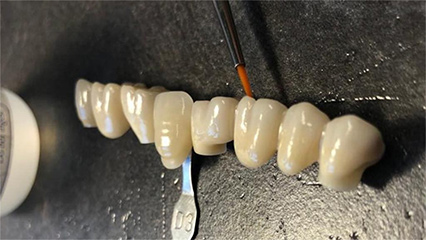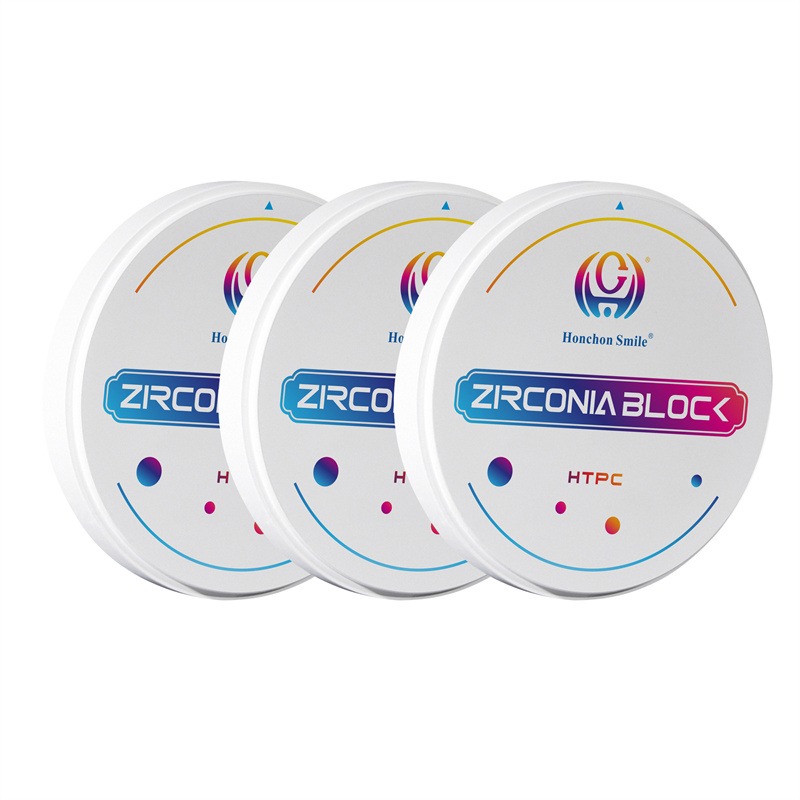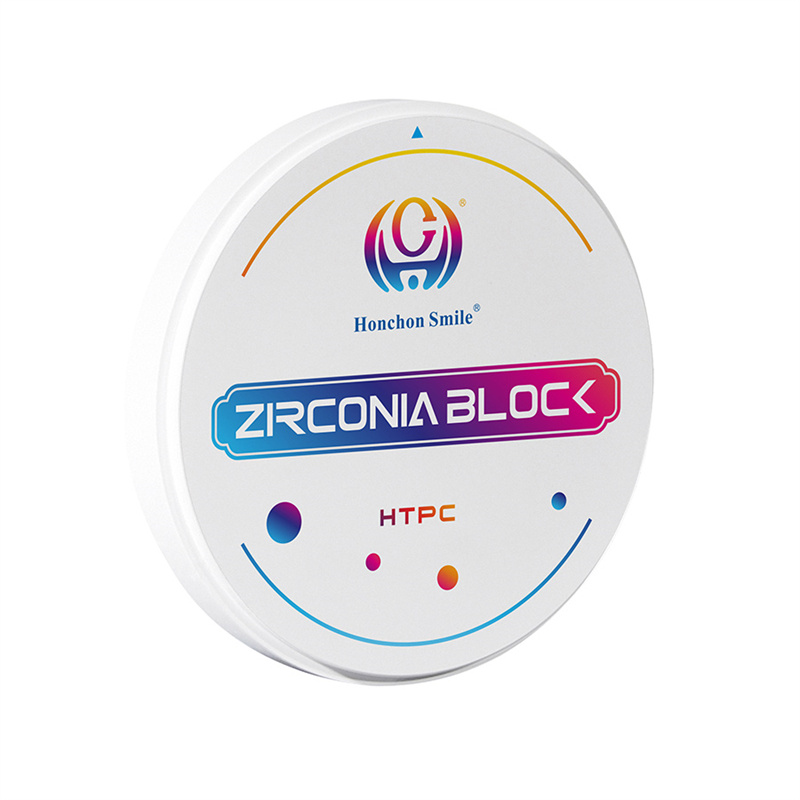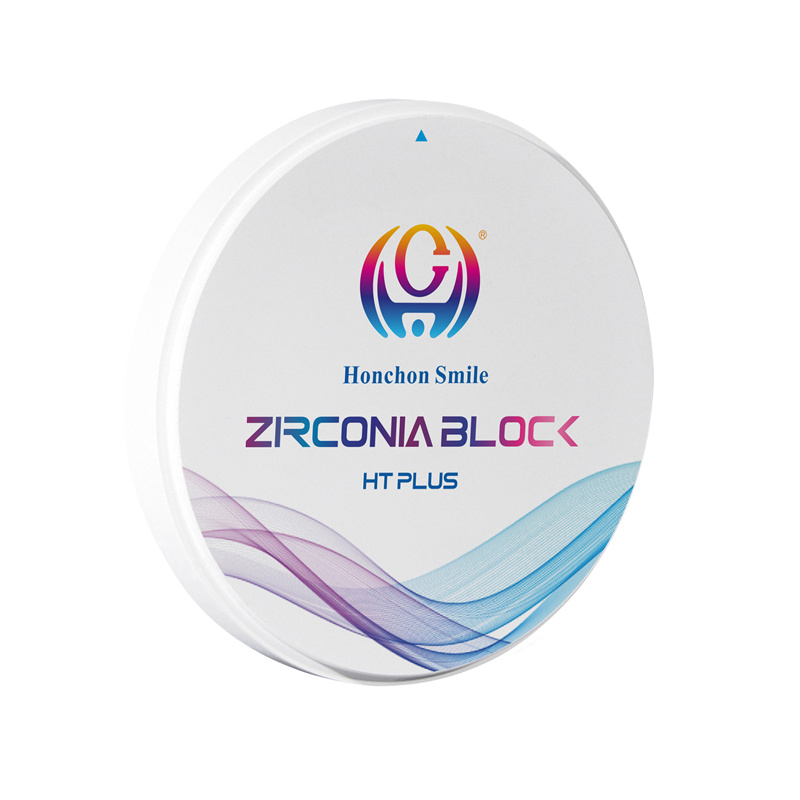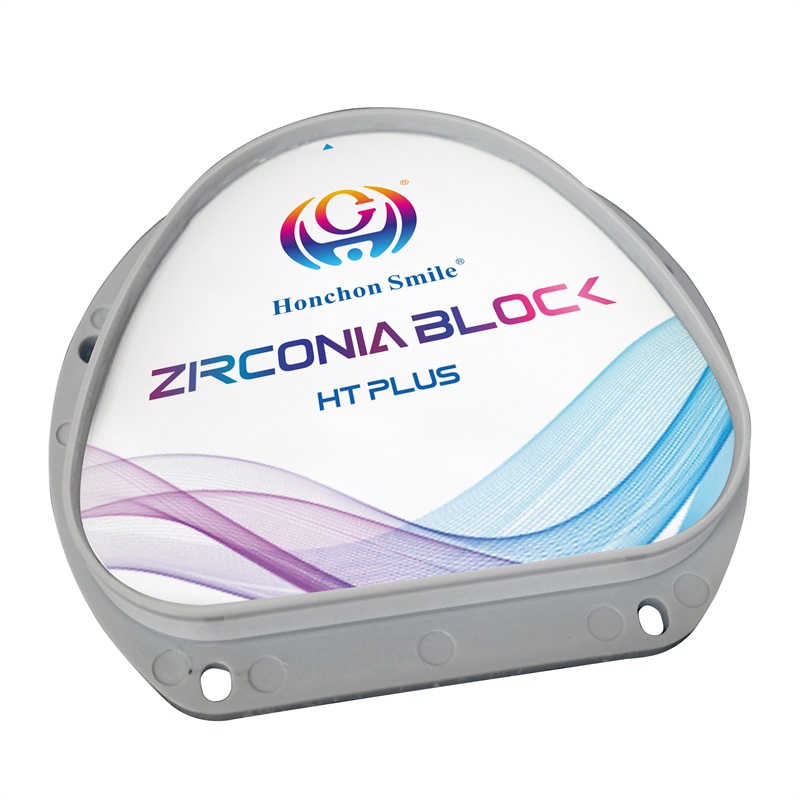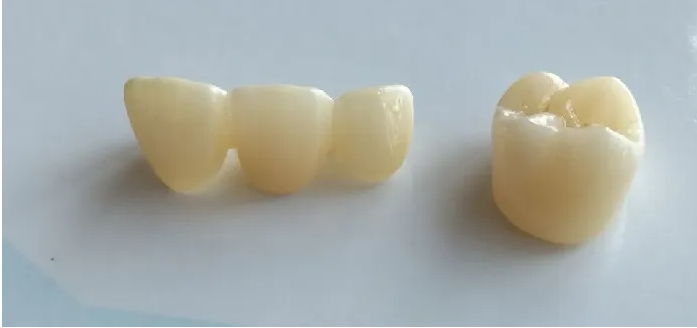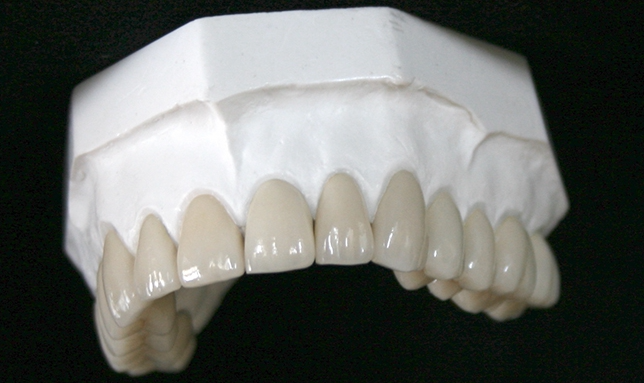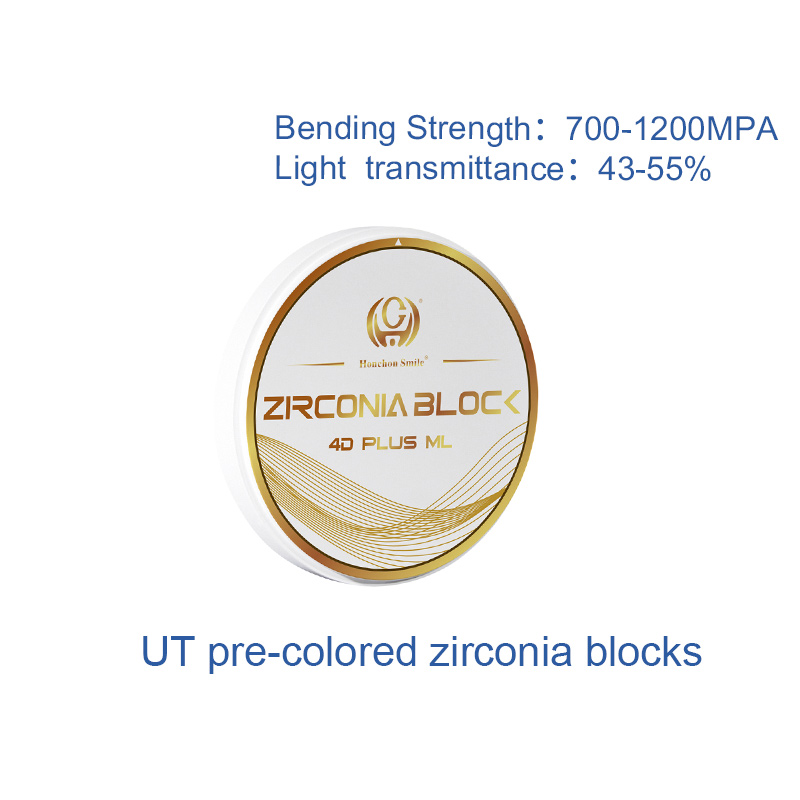Understanding the Different Types of Dental Zirconia Blocks: White, Pre-Shaded, Multilayer, and Gradient Multilayer
2025-07-14
1. White Zirconia Blocks
Overview:
White zirconia blocks are the most basic form of zirconia. They are not pre-colored and require manual staining or dipping before sintering.
Features:
High strength (often 1100–1200 MPa or more)
Requires external coloring liquids
Suitable for posterior crowns, bridges, and frameworks
Best for customized staining based on dentist request
Pros:
Flexible for personalized shading
Often the most cost-effective option
Cons:
Requires extra staining work
Color uniformity depends on technician skill
Price:
$ Most affordable
2. Pre-Shaded Zirconia Blocks
Overview:
Pre-shaded zirconia blocks are infused with color matching standard dental shades (e.g., VITA A1–D4) during production.
Features:
Uniform color throughout the block
Available in various shades (VITA16 + bleach options)
No need for external coloring
Consistent results for single units and small bridges
Pros:
Saves time in the lab
Reduces staining errors
Stable color after sintering
Cons:
No gradient effect—best for monolithic crowns, not anterior restorations
Price:
$$ Moderately priced
3. Multilayer Zirconia Blocks
Overview:
Multilayer zirconia blocks are engineered with multiple horizontal layers to simulate the natural transition from dentin to enamel.
Features:
Typically 3–5 color layers
Shade and translucency vary across layers
Ideal for full-contour crowns and bridges
No additional staining required
Pros:
Natural aesthetic result
Time-saving
Good strength with decent translucency
Cons:
Limited gradient smoothness (compared to 4D or gradient multilayer types)
Price:
$$$ Higher than pre-shaded blocks
4. Gradient Multilayer Zirconia Blocks (Also Known as 4D or 5D Zirconia)
Overview:
These are the most advanced zirconia blocks available, offering a seamless gradient in both color and translucency, mimicking real teeth from cervical to incisal edge.
Features:
Gradual transition in both chroma and translucency
High aesthetics, especially for anterior restorations
Suitable for monolithic full-arch restorations
Often made with premium raw materials (e.g., Tosoh zirconia powder)
Pros:
Most lifelike appearance
No need for extra coloring or veneering
Excellent translucency in incisal zones
Cons:
Highest price point
Slightly lower flexural strength in incisal layer (due to higher translucency)
Price:
$$$$ Most expensive
Summary Table
| Type | Color Treatment | Layers | Translucency | Strength | Price Level | Best For |
|---|---|---|---|---|---|---|
| White Zirconia | External staining | Single color | Low–Medium | Very High | $ | Posterior crowns, long bridges |
| Pre-Shaded Zirconia | Factory-stained | Single color | Medium | High | $$ | Posterior crowns, small bridges |
| Multilayer Zirconia | Factory-stained | 3–5 layers | Medium–High | High | $$$ | Anterior/posterior monolithic cases |
| Gradient Multilayer Zirconia | Factory gradient | Seamless layers | High | Balanced | $$$$ | Full-contour aesthetic restorations |
Conclusion
Choosing the right dental zirconia block depends on the restoration type, location in the mouth, aesthetic requirements, and budget.
White zirconia is cost-effective and ideal for labs that prefer manual shading.
Pre-shaded zirconia balances cost and simplicity.
Multilayer zirconia offers better esthetics with built-in shades.
Gradient multilayer zirconia provides the highest aesthetic results and is perfect for anterior restorations.
At HONCHON, we manufacture all types of zirconia blocks using premium materials and advanced processing technologies. Whether you need cost-effective white blocks or premium gradient multilayer blocks, we have the solution tailored to your needs.
Contact us today for pricing, samples, or OEM customization support.


